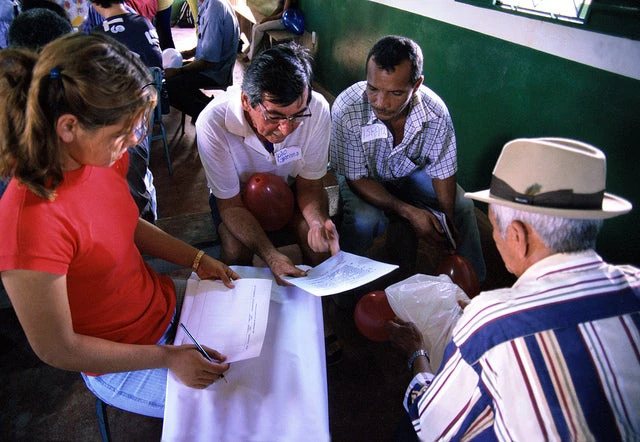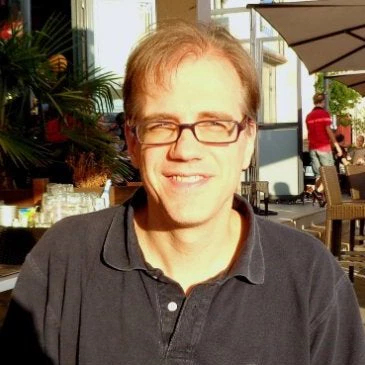
In Nepal, indigenous groups produced a range of training materials, including videos in local languages on forests and climate change, to help more than 100 women and community leaders in the Terai, Hill and Mountain areas better understand what terms like ‘mitigation and adaptation strategies for climate resilience’ mean for them in their daily lives.
A team of consultants in Kenya, who are members of indigenous communities with an understanding of regional politics and geographical dynamics, worked on increasing community involvement in sustainable forest management through workshops and face-to-face meetings. As part of their work, they collected information on land tenure status within indigenous territories, which will help the country prepare a national strategy for reducing emissions from deforestation.
In Peru, scientists, indigenous peoples organizations, non-government organization (NGO) networks, and environmental policy experts worked together to combine satellite measurements of carbon density, field data, and boundary records of indigenous territories and protected areas. Their aim was to develop a forest carbon map which spanned the nine countries that make up the Amazon basin. The resulting map and study were published in a peer-reviewed journal and presented at the United Nations climate change conference in Lima. And it also helped bring the voices of indigenous people onto on the international stage.
These are just some of the initiatives which have been supported by the Forest Carbon Partnership Facility’s (FCPF) Capacity Building Program for Forest-Dependent Peoples and Southern Civil Society Organizations.
Forest-dependent indigenous peoples and other forest-dependent communities are disproportionally vulnerable to the impacts of climate change. They often live in or near environmentally sensitive ecosystems such as tropical forests. They are also on the front lines of ecological change and face mounting pressures from competing uses of land and natural resources. As they depend primarily on the biodiversity and their traditional lands and waters for their very survival, climate solutions that reflect the needs and priorities of indigenous peoples and local communities are essential for effective and sustainable climate action.
A grant signing ceremony today in New York City alongside the United Nations Permanent Forum on Indigenous Issues kicks off the second phase of this program, which will run through mid-2018. The initiative provides grants, usually between US$300,000 to US$800,000, directly to regionally active indigenous peoples, forest-dependent and civil society organizations. And as demonstrated in the past, they then work with people on the ground in countries in support of national-level forest conservation and climate change efforts.
The FCPF capacity building program has ambitious goals: to increase understanding of climate change and REDD+, and to improve participation of these groups in planning and policy decisions at the national level and to promote the sharing of experiences and lessons at a regional level. This program allows for direct access to financing for the stakeholder organizations to execute activities. Previously, this type of money has typically passed through governments or northern non-profits.
The Mainyoito Pastoralist Integrated Development Organization (MPIDO), an indigenous peoples’ organization based in Kenya, is the African regional recipient of the FCPF grant that is being signed in New York. Similar agreements with organizations in Asia and Latin America and the Caribbean will be signed in the coming months.
Collaborating with indigenous peoples and local communities on the issues directly affecting them is important for the World Bank. In addition to the FCPF capacity building program, a Dedicated Grant Mechanism (DGM) funded by the Forest Investment Program (FIP)* provides financing for forest communities in 14 pilot countries. Indigenous peoples and local communities who take part are the main decision-makers in the governance of the grant funds which range from US$4.5 to $6.5million per country. Work priorities vary, but some countries have already identified land titling and mapping of indigenous lands as core activities. The initiative is currently active in Brazil, Burkina Faso, Democratic Republic of Congo, and Peru.
Initiatives like these two are particularly relevant for the REDD+ (Reducing Emissions from Deforestation and Forest Degradation plus) agenda, where these stakeholders bring important perspectives to discussions and decision making.
Tropical forested countries across the world have taken important institutional, policy, legal and piloting steps to become ‘ready’ for REDD+. Building capacity and understanding is a key element of the process and it’s clear that leadership and involvement of indigenous peoples, forest-dependent communities and local civil society organizations is a necessity for REDD+ to deliver on its aims.
*The Forest Investment Program is part of the Climate Investment Funds


Join the Conversation